Surveillance to prevent mischief-mongers from Teasing and turning the elephants violent
By M.T. Yogesh Kumar
A grand Dasara means thousands of tourists trooping into the Mysore Palace and many among them would want to see the elephants, the mainstay of the festivities.
To ensure that the nine elephants are safe at their designated place inside the Palace, over eight CCTV cameras have been installed and once the second batch of elephants comes, more cameras will be installed. One cannot just mess up with the elephants as they are under constant vigil.
Apart from a sort of control room that has been set up to monitor the jumbos with a display screen where all the eight camera visuals can be seen, the higher officers can access the visuals on their mobile phones. They can see the happenings of the elephant camp round-the-clock.
Also, the footage is continuously recorded and batteries have been connected if there is any disruption in power. The footage will be stored for one month and will be submitted to any audit.
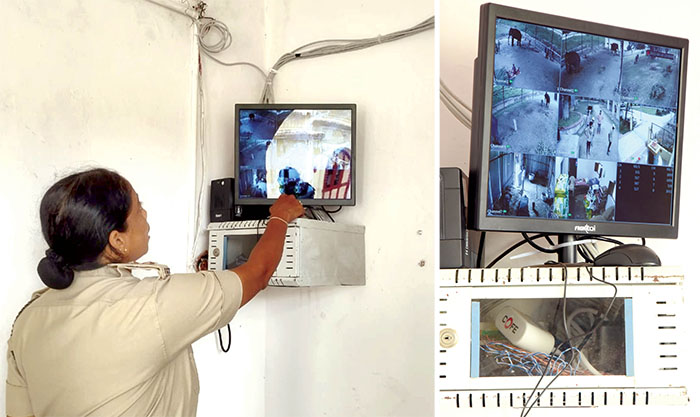
While other elephants who have their own role to play in the festivities are tied in a row, Abhimanyu, who has the responsibility of carrying the 750-kg Golden Howdah, is tethered separately and he has a female companion in the form of Chaitra.
The reason for Abhimanyu being separated from the rest is that almost all the tourists who come near the Palace elephant enclosure ask for a glimpse of the Howdah elephant.
“Sometimes it turns out to be a nuisance as all of them want to see Abhimanyu. Among the crowd might be mischief-mongers, you will never know. Some of them will surely tease and irritate the elephants and seeing unfamiliar humans close to them, the jumbos will turn violent. We do not want to agitate the elephants and we want to let them be by themselves without any disturbance. The CCTV cameras have been installed for this very purpose,” Deputy Conservator of Forests (Wildlife) Dr. V. Karikalan told Star of Mysore.
“Usually, curious visitors and tourists go very close to the elephants that are very sensitive and only obey their Mahout and Kavadis. This being the case, any unfamiliar person will aggravate the elephants and they might react in an unruly manner.
Also, a Mahout and Kavadi cannot constantly be with the elephants as they have other duties to attend to. In such a situation, these cameras will help us keep an eye on elephants,” he said.
In previous years, the Forest Department has got complaints from the Mahouts and other elephant caretakers that some people venture close to the elephants and indulge in mischievous behaviour. That is why this watch, he added. Tourists might also try and click selfies with the elephants and this might cause the elephants to go out of control.
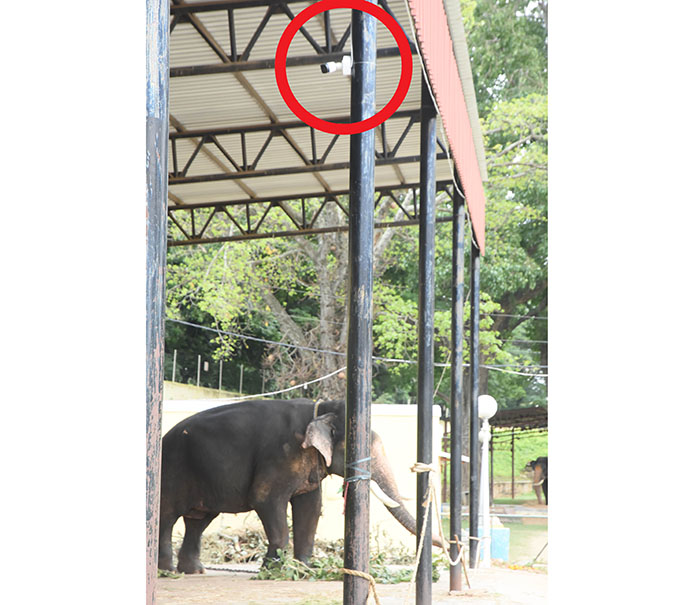
Cameras inside storeroom
Cameras have also been installed in the storeroom where the foodgrains, pulses and other daily diet essentials are stored along with elephant medicines. This is to prevent any kind of sabotage and to monitor who will enter and exit the rooms, what time the food is cooked and fed to the elephants and whether the staff are sticking to the diet regime as prescribed by the veterinarian.
As Dasara nears, the training of elephants will intensify and naturally, the food intake will also increase. “This surveillance system will come in handy to keep a close watch on all the activities in the elephant section. The last two years were low-key Dasara where the procession was held within the Palace and there was no entry to the public. This year, the scenario is different and we are taking enough precautions,” the DCF added.





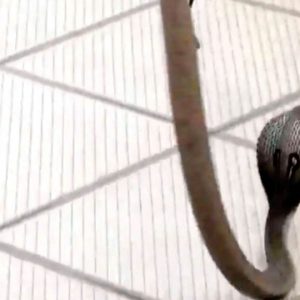
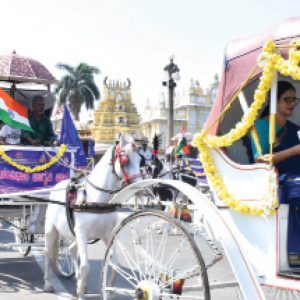
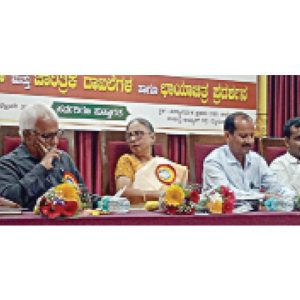
These Dasara elephants are puny and considerably smaller in size, compared those elephants that took part in Dasara in 1950s and 1960s, particularly the 2 elephants-one designated to carry the golden howdha where JC Wadiyar would sit atop the elephant, and the reserve elephant. They were massive elephants, at least twice the size of these elephants.
These elephants look not well nourished too, as though they are on a diet! Looking at too, the horses carrying the police officers, they look thin too, and undernourished.
Like everything else in independent India, poor quality has set in!